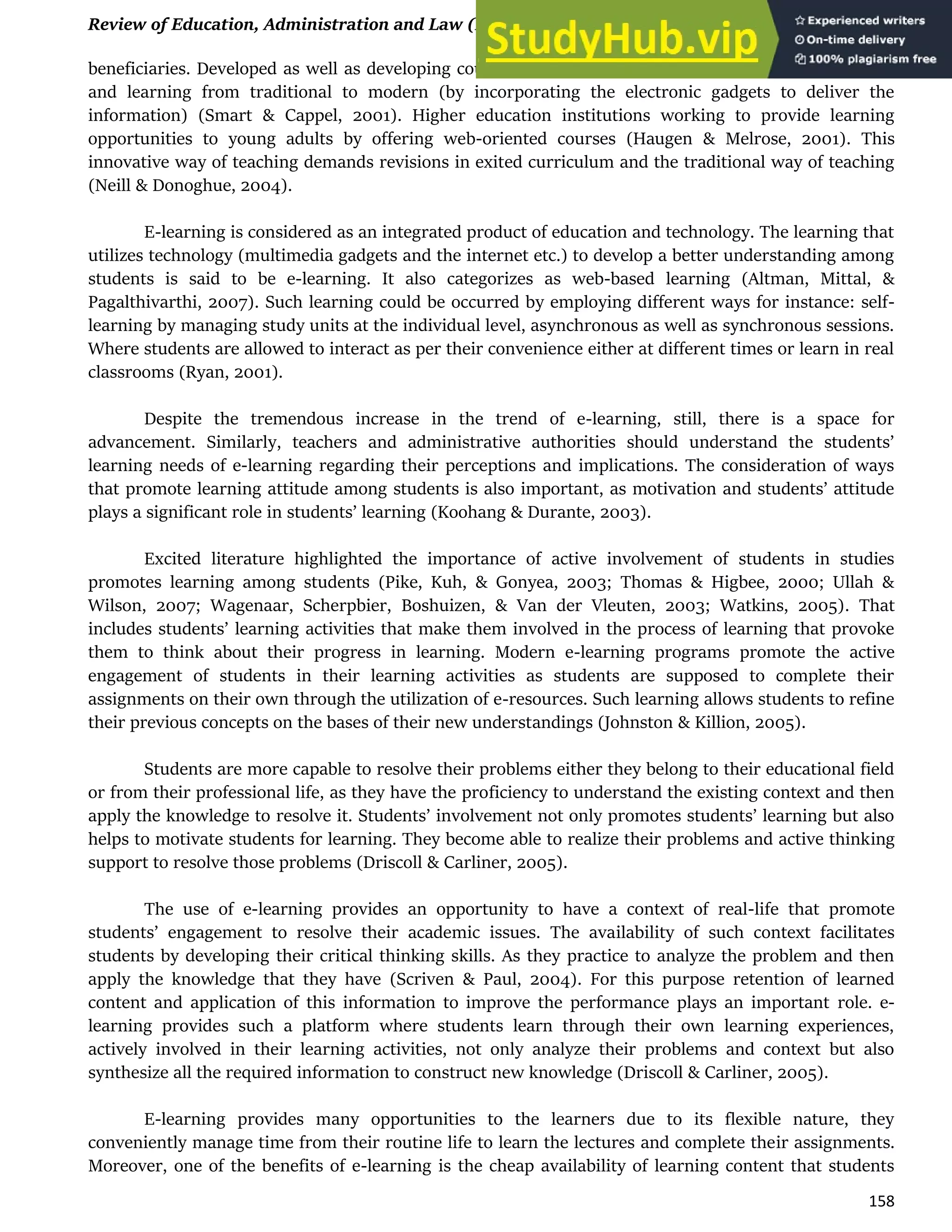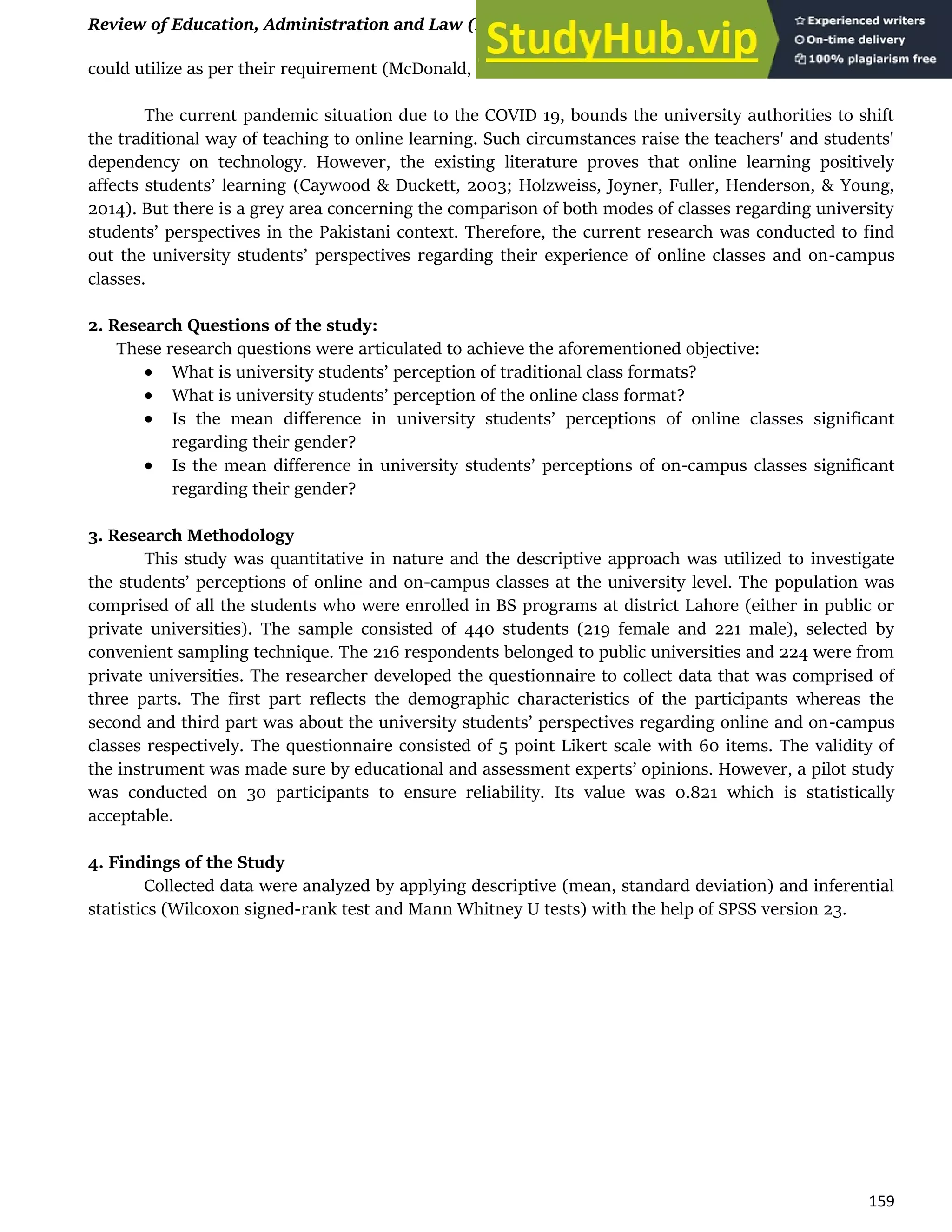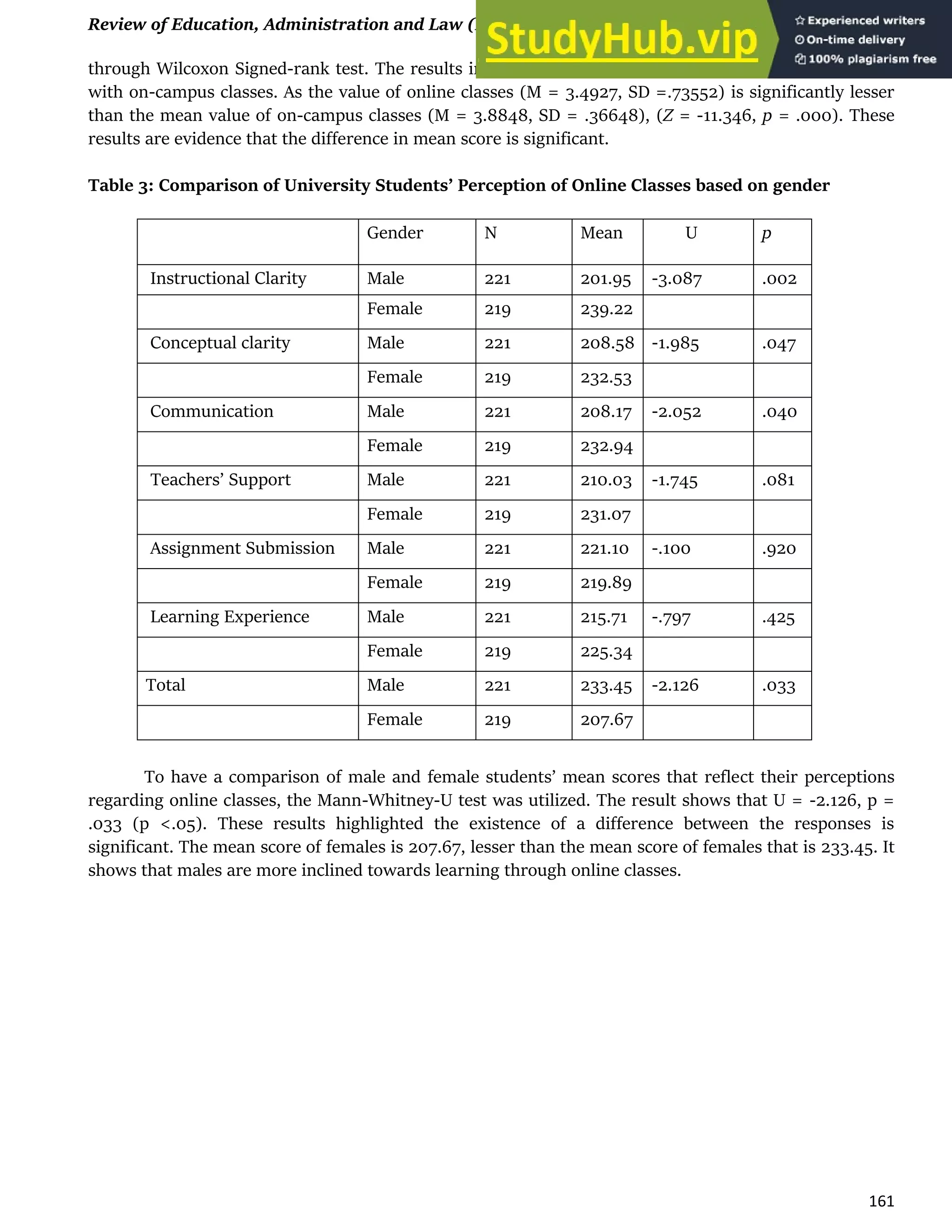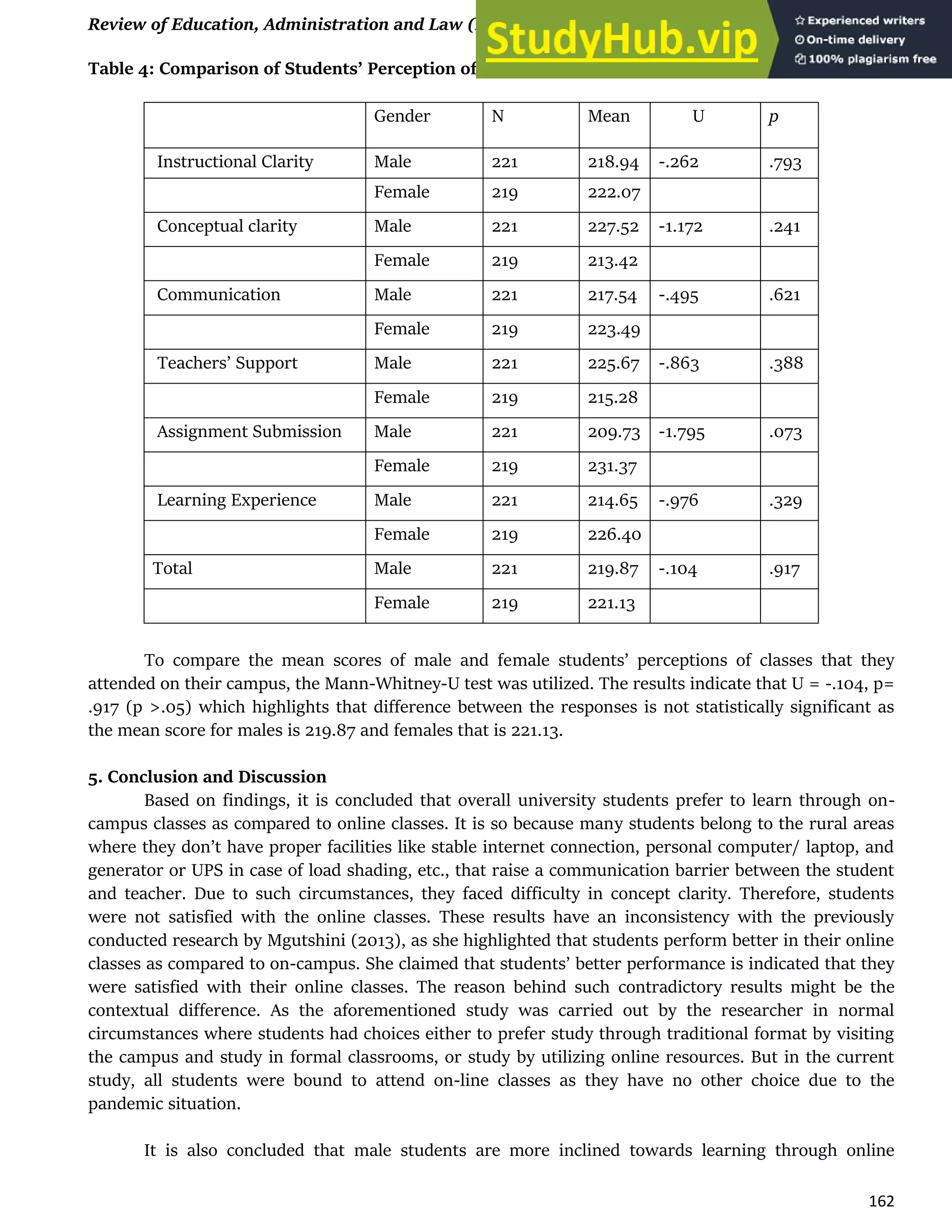This document summarizes a study that compared university students' perceptions of online classes versus on-campus classes. The study surveyed 440 students from public and private universities in Lahore, Pakistan. The results showed that overall, university students prefer on-campus classes compared to online classes. Additionally, male students were more inclined toward online classes while female students favored on-campus classes. The study aimed to gain insight into students' preferences to inform how they should be taught.






